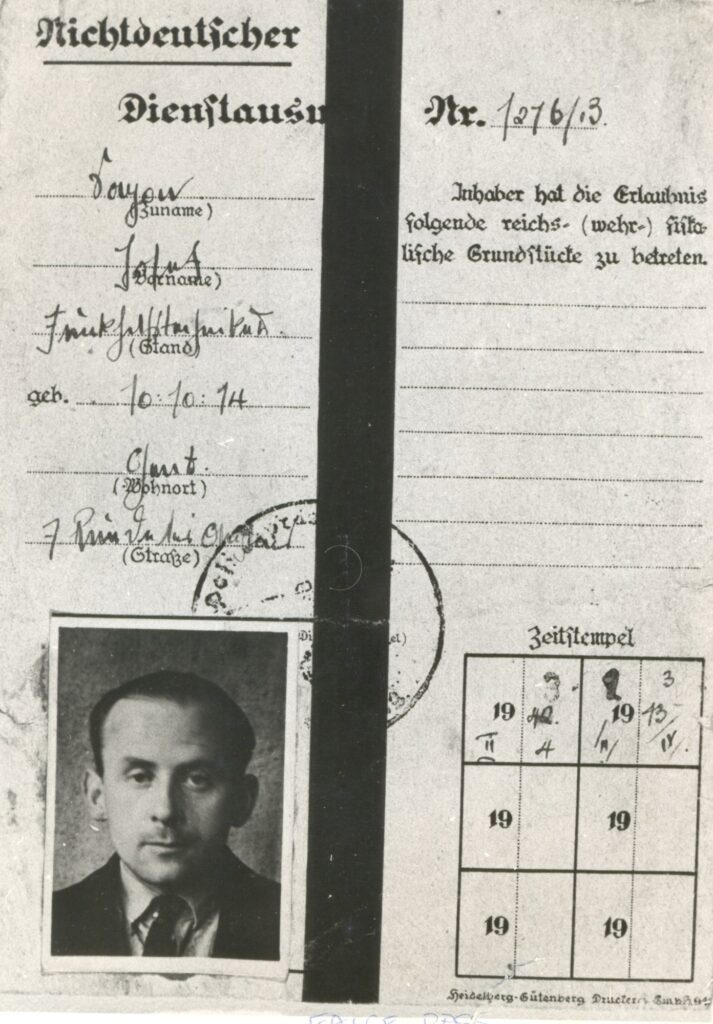
For the boy growing up in Shakespeare Avenue in the South Tyneside town of Hebburn, not even the Bard could have imagined the drama of the life which lay in store for the youngster.
Dominic Bruce, born in Hebburn in 1915, made 17 escape attempts as a prisoner of war of the Germans.
During the Second World War he was the only prisoner to escape from the top security Colditz and also the Spangenberg PoW castles. He was to spend a total of eight months in solitary for his escaping escapades.
Colditz contained Allied officers with a history of escape attempts from other prisoner-of-war camps. It was the only POW camp with more guards than prisoners.
The ingenuity and daring of Bruce’s breakouts could have been the stuff of fiction, so much so that the Imperial War Museum made recordings of his recollections.
Now he is to be commemorated with a plaque at his former home in Shakespeare Avenue later this year.
Flight Lieutenant Bruce was also the only man to be awarded the Military Cross — for his escape exploits — and the Air Force Medal.
After the war he was presented with the British Empire Medal for services to education, as was his mother Mary who was known as the ‘Angel of Hebburn’ for her charitable works.
His fearless and adventurous streak emerged early in his life when he ran away from home and caught a train to London.

Educated at St Cuthbert’s Grammar School in Newcastle, he joined the Royal Air Force in 1935 and trained as a wireless operator. He was soon involved in the first of many hair-raising experiences.
In 1937, he survived the crash of his bomber resulting from a badly judged descent which removed the roof of a train travelling on railway lines adjacent to the Handley Page aircraft works airfield at Radlett in Hertfordshire.
A year later he was knocked out by a lightning strike on his aircraft. When he recovered, he repaired the wireless set and alerted his base to the fact that the crew were planning to bale out.
- Read more: Unlucky break has a silver lining
He rushed the aircraft hatch and jumped but his parachute harness caught on projecting clamps and pulled the trapdoor shut above him, leaving him suspended under the bomber.
Realising what had happened, the crew raised the trapdoor and were shocked to see Bruce shoot back into the aircraft, only to bale out again.
This was all before the war had actually begun. When it did, his bomber was shot down over Zeebrugge in Belgium in June 1941 and he was picked up at sea by a German vessel and taken into captivity — or so the Germans thought.

Bruce was sent to Spangenberg Castle where he and two fellow PoWs hatched a plan to escape and steal a Junkers 52 German aircraft — the only type they knew how to pilot — from a nearby base and fly it to Switzerland.
The three PoWs walked out of the camp posing as a German officer and two doctors of a Swiss Red Cross inspection team.
But they were forced to change plans when there were no Junkers at the airfield. After 10 days on the run, they were recaptured and sentenced to 53 days in solitude.
Bruce picked the lock on his cell, and those of his two fellow escapees so they could play poker with a set of home made cards. For this offence Bruce faced a court martial.
Having already escaped from Warburg PoW camp dressed as an orderly in a fake workers party, Bruce was then sent to Colditz castle in 1942 and it was here he staged one of his most outrageous escapes.
- Read more: Remembering Hairy Biker Dave Myers
The Colditz commandant introduced a crackdown on personal belongings and prisoners were told to pack up excess items and an assortment of boxes which were delivered to be placed in storage.
Bruce arranged to be packed inside a Red Cross box, three-foot square, with a file and a 40-foot length made from bed sheets. That night he made his escape from the storeroom.
When the German guards found the empty box, they were confronted with a message in German in chalk left by Bruce which read: ‘The air in Colditz no longer agrees with me. See you later!’
He had been sent a silk map by his wife, concealed in the brass button of a uniform, and he used it to travel 400 miles to Danzig using bicycles which he took from outside village churches during Mass.
Coming across a file of soldiers being marched down a street, Bruce cycled up to the head of the column, with the guards presumably thinking he was a local.
He then shouted to the prisoners — who cheered at hearing a Geordie voice — that they were not to worry because the Allies were winning the war. Before the shocked guards could unsling their rifles, Bruce had accelerated around a corner and disappeared.

He was recaptured in Danzig while trying to board a Swedish ship.
Another escape bid involved crawling through the castle sewer and, after being caught, billing the camp commandant for having cleaned the drain..
Yet another attempt saw Bruce, who was small in stature, persuading a friend who was 6ft 5 inches tall, to carry him inside his long greatcoat, clinging to a series of straps.
He was to carry a football under his arm, into which Bruce would put his head using a hole cut into the back of the ball. They would go to the exercise park below the castle walls where Bruce would slip out from under the coat.
Bruce was liberated on April 16 1945 by the US Army. After the war he and his wife Mary had nine children.
He died in 2000, aged 84.

Since 1989 the Community Foundation has given £167m in grants to support communities across the North East










